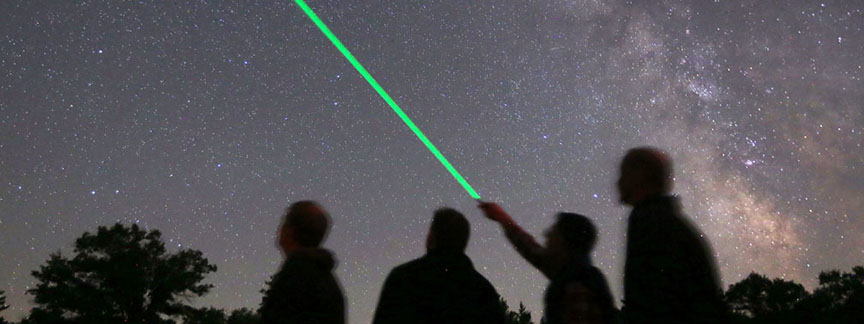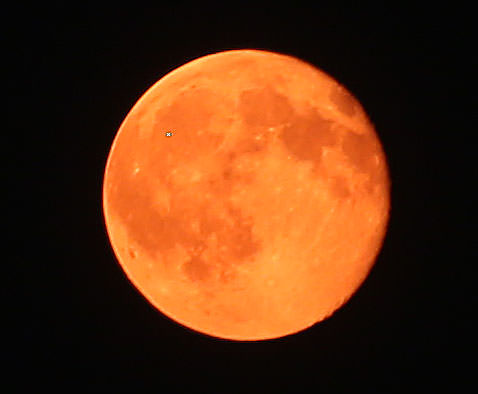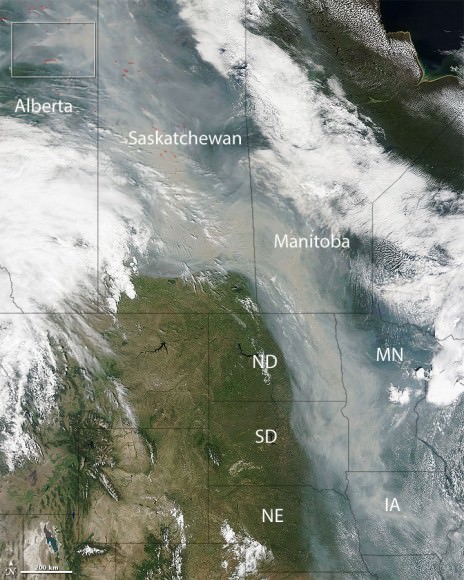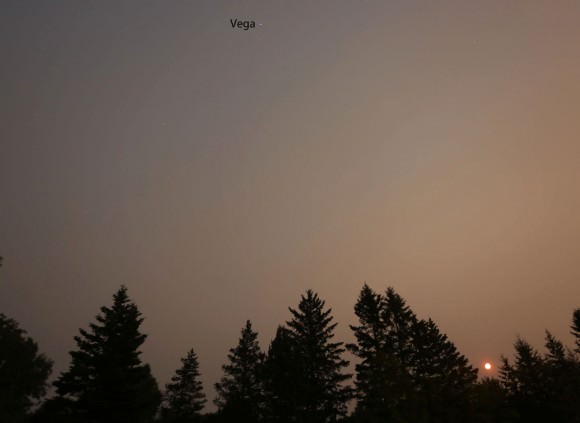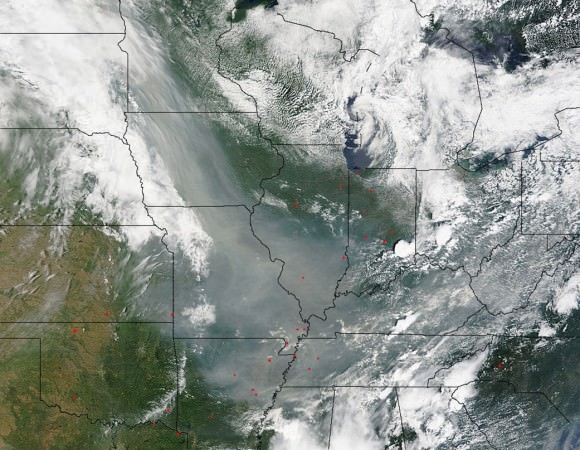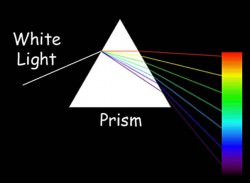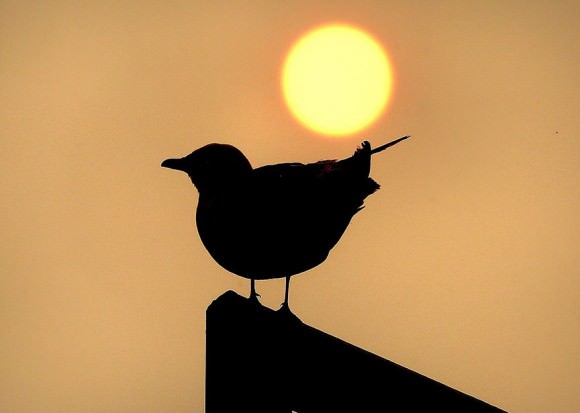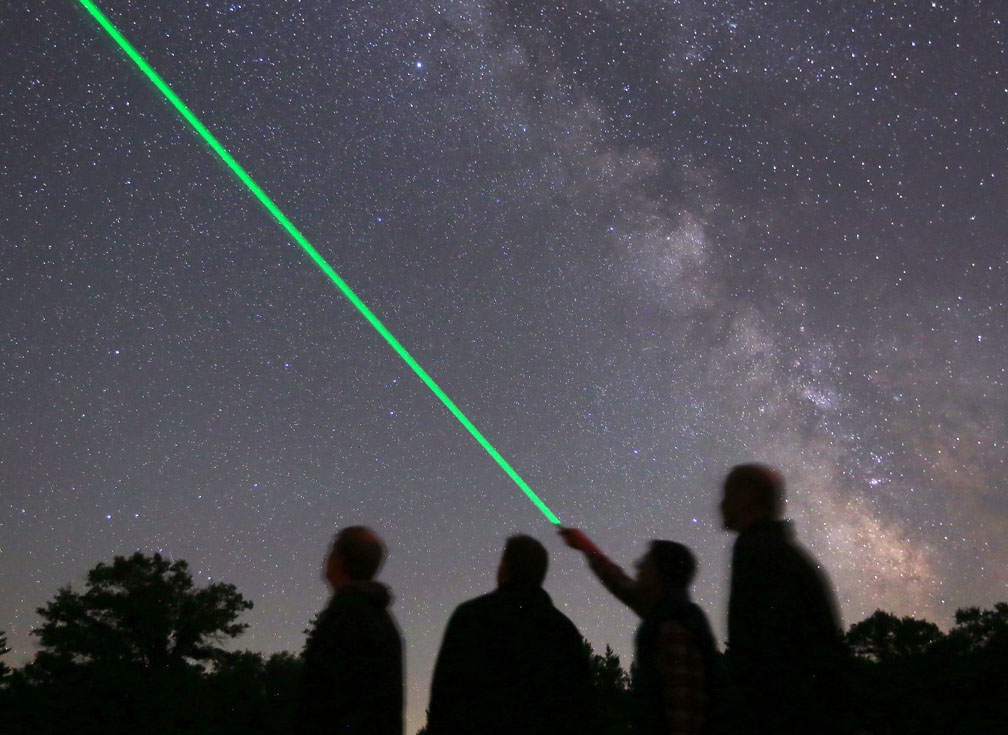
Devious humans have given green lasers a bad name. Aiming a laser at an aircraft or the flight path of an aircraft is illegal according to a 2012 U.S. federal law. Jail time awaits offenders. Don’t point at a police officer either. To get a taste of the dark side of green lasers, check out these rap sheets.
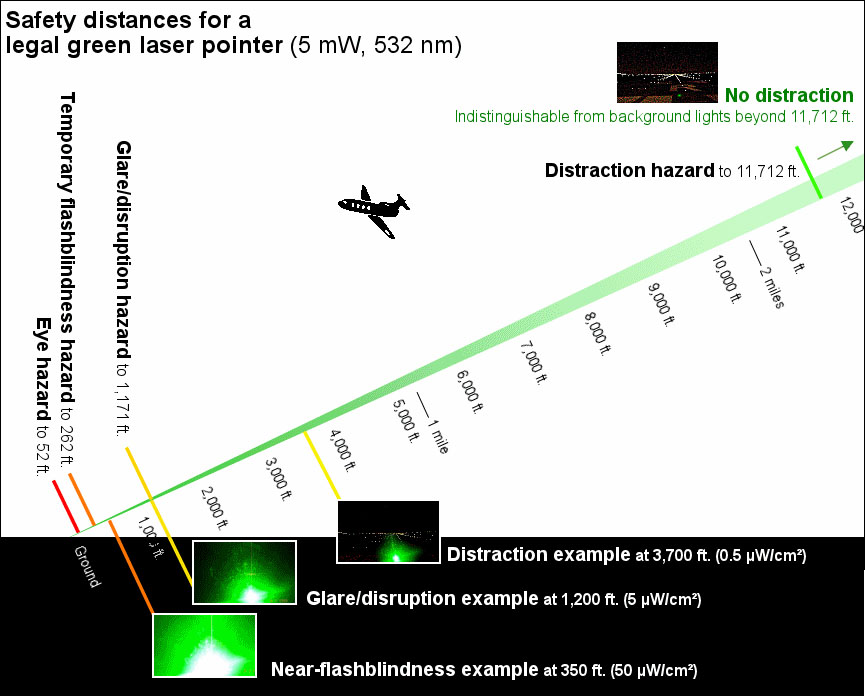
But if you mind your manners, a green laser is one of the best tools available to amateur astronomers eager to share the wonders of the night sky with the public. There’s simply nothing better to point out constellations, comets, individual stars and satellites in the night sky. Amateurs love ’em! So does the public. Go to a star party and pop out the laser, and you’ll get everyone’s attention. There’s magic in being able to point out our favorite points of light with a beam of light.
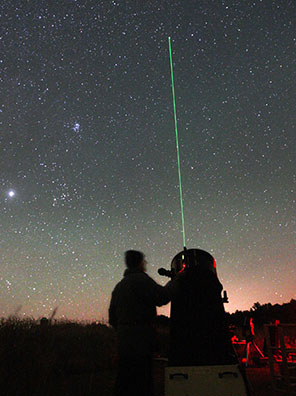
First, let’s look at laser etiquette to ensure the safety of our fellow stargazers:
* Always gather the group around you first, raise the laser above the crowd and ask everyone to look up. Then turn on the beam and aim. That way no one will accidentally face into the light. This is crucial when aiming low above the horizon, where the beam, nearly horizontal, has a better chance of striking someone in the eye. Take extra precaution to make sure the group is close. The closer the gathering, the brighter and easier the beam will be to see. Viewers too far off to one side or another will see a weaker, less intense light.
* Green lasers often use AAA batteries and draw a good amount of power especially on chilly nights. You’ll only get a few minutes of operation if you leave it out in the cold. Store your laser in an inside pocket to keep it warm until you need it. Tuck it back in between pointing sessions. Have a fresh pair of batteries around and keep those in your pocket, too!
* If you see an airplane headed in your direction, avoid using the laser light for a couple minutes just to be on the safe side.
* Never give your laser to someone in the dark to “try out.” Especially a child! They won’t be familiar with its safe use.
* Store your laser in a safe place when not in use, so kids can’t accidentally find it.
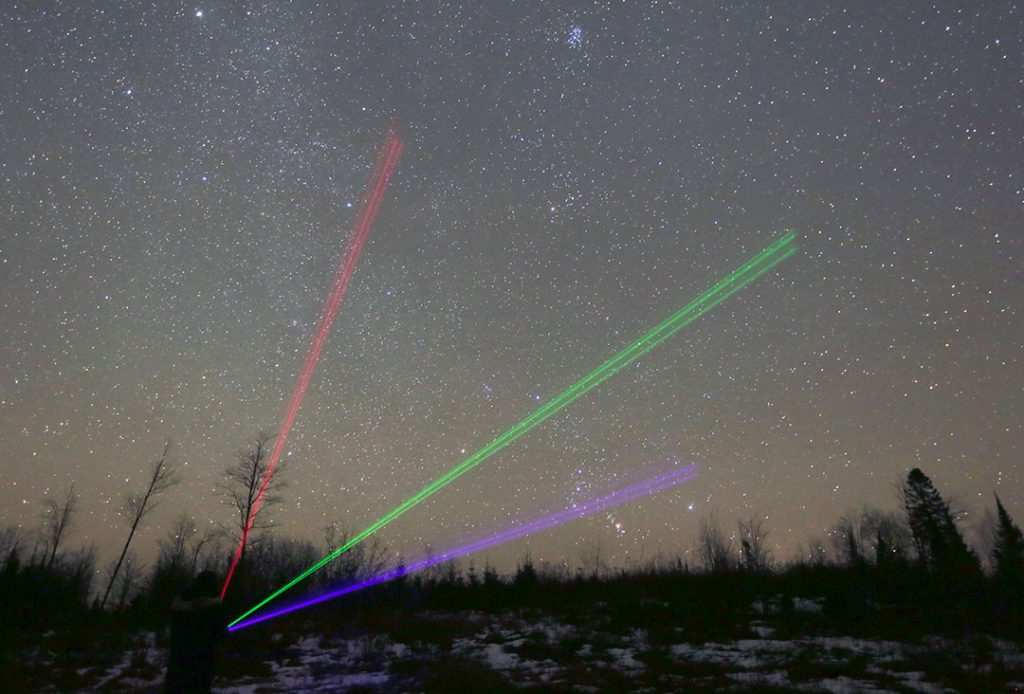
The most common green laser available is rated at 5 milliwatts (mW), just adequate for night sky pointing. That said, be aware that brightness from one manufacturer to another can vary. Some 5mW pointers produce nearly as much light as a 30 mW model, practically a light saber! Others, like my first green laser, did the job on moonless nights, but proved too weak by first quarter phase. 30mW and 50mW are much better and significantly amp up the wow factor when you’re out with the crowd. They’re also much easier to see for larger groups and remain visible even in bright moonlight.
Back in olden days, 5 mW red and green lasers were as bright as they came, and the green ones were pricey. But nowadays, you can get powerful pointers in green, red, blue and violet. All will trace a visible beam across the night sky with green the brightest by far because our eyes are most sensitive to green light.

I should add that yellow lasers have also recently become available. Like green, they’re superb for long-distance applications, but prices — oh, my — will burn a hole in your wallet. How about 300 bucks! You can get a 5 mW green laser for $5-10 that’s similarly bright. No matter what kind of laser pen you buy, they all operate on the same principle: a laser diode, related to an LED (light-emitting diode), powered by AA batteries emits a narrow, coherent beam of light when switched on.
Coherent light is light of a single wavelength where all the crests and troughs (remember, light is a wave) are in lockstep with one another. Each crest precisely overlaps the next; each trough snugly fits within the other. Regular light contains a garden salad mix of every wavelength each vibrating out of stop, to its own drummer as it were. Because laser light is coherent, it stays focused over great distances, forming a narrow beam ideal for pointing.
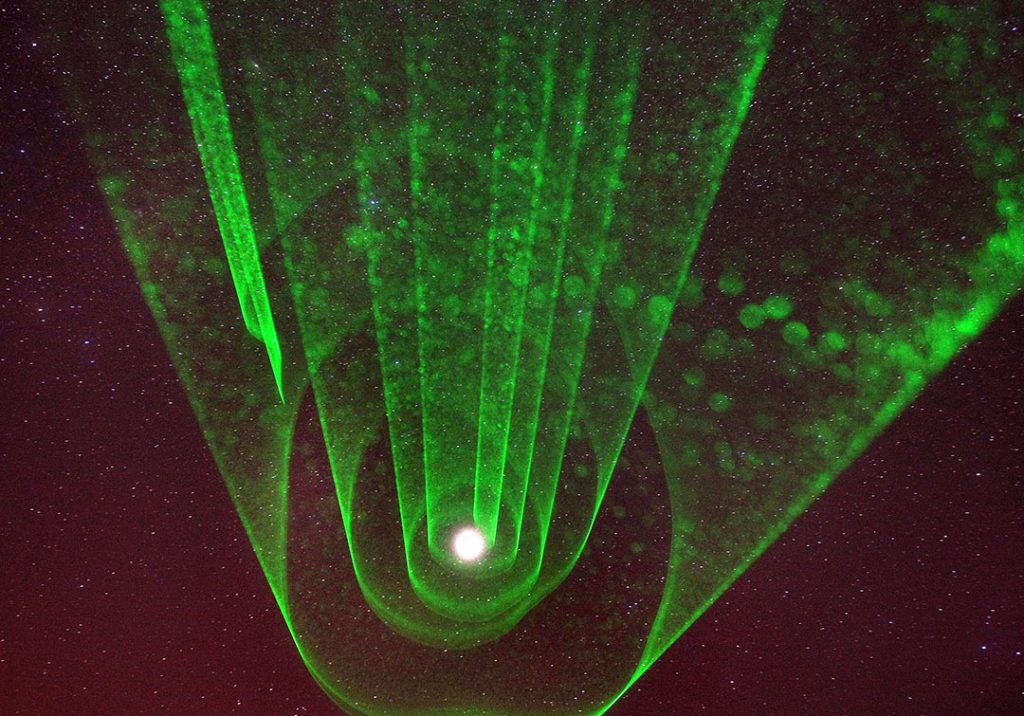
Lasers are not only rated by power (milliwatts) but also the specific wavelength they emit. Green lasers beam light at 532 nanometers (nm), blue at 445 nm, violet at 405 nm, red at 650 nm and yellow at 589 nm. Green laser pointers generate their light from an infrared laser beam within the pen’s housing. Normally, any infrared light should be filtered from the final beam but in the majority of inexpensive laser pointers, it beams out right along with the green. We can’t see it, but concentrated infrared laser light poses an additional hazard when directed into the eyes. When you hear of lasers being used to pop balloons or light a match, it’s the leaky infrared that’s doing the popping. Yet another reason to use your laser with care!
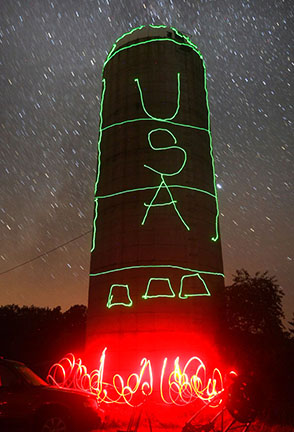
Lower-powered laser pointers use AAA batteries. For instance, both my 5 mW and 55 mW green lasers use AAA batteries. Higher-powered pointers in the 5-watt range use a single #18650 (or 16340) 3.7 volt lithium ion rechargeable battery. You can either purchase these online (Orbitronics makes an excellent one for $12.99) or at your local Batteries Plus store. You’ll need a charger, too, which runs anywhere from about $8 for a single battery model to around $30 for a multiple battery version with different charging speeds. Be sure you get one with an LED light that will alert you when the batteries are done charging.
Whether sold in the U.S. or elsewhere, nearly every laser comes from China. We’ll talk about that in a minute, but if you purchase a laser that uses rechargeable batteries, beware of no-name chargers and off-brand batteries that lack safeguards. Some of these inexpensive batteries have been known to explode!
What to buy? I can’t speak to every firm that offers laser pointers, and there are many, but some of the more popular ones include:
* Wicked Lasers
* Z-Bolt
* Optotronics
* LED Shoppe
I’ve bought from Optotronics, based in Colorado and the LED Shoppe, out of Hong Kong. I took a chance on the LED Shoppe’s lasers and have been pleasantly surprised at the low cost, free shipping and good customer service. While power ratings can vary from what the label reads, I’ve been especially pleased with both the 55 mW from Optotronics and the 5-watt (yes, FIVE WATTS) green and red pointers from the LED Shoppe. Their 50 mW green version does a great job, too. Just a disclaimer — I don’t work for and am not associated with either company.
Bottom line: If you’re looking for a effective pointer for public star parties, I recommend a 50 mW or higher green pointer. Anything in that range will provide a lovely bright beam you can use to literally dazzle your audience when sharing the beauty of the night. Before you make your decision, check your country or state’s laser use laws where for the U.S. or worldwide. If buying in the U.S., speak to the business owner if you have any questions.
Have a Merry Green, Red, Blue and Violet Christmas!

